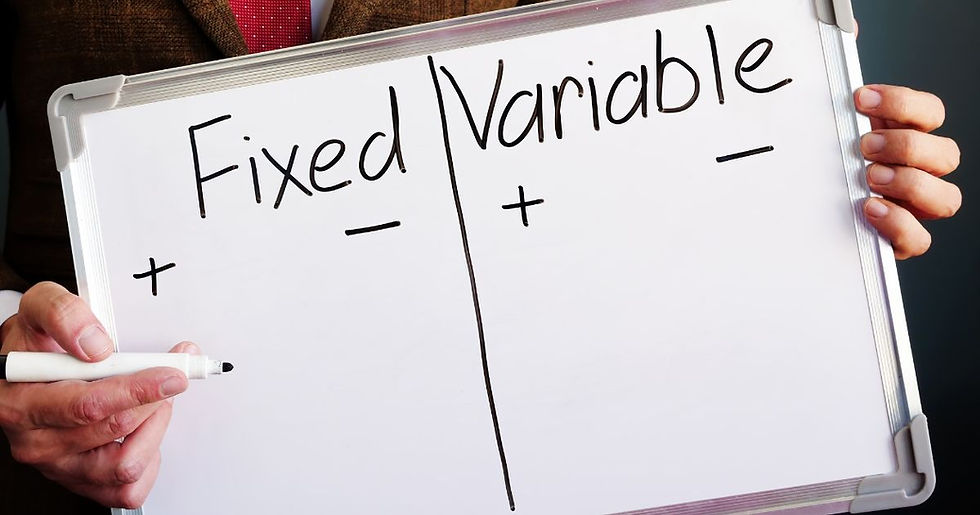Fixed Vs Variable Home Loans
- Simple Easy Finance
- Dec 8, 2023
- 2 min read

One of the most critical steps in buying a new property is to finance your purchase correctly, ensuring it’s affordable and will not disrupt your lifestyle.
Understanding your mortgage options will see you quickly bump up against a common dilemma: should I select a fixed or variable rate?
There is no right or wrong answer. The answer depends on your lifestyle and your threshold for risk.
There are pros and cons to each and you may also be able to split your loan between the two.
Variable Rates ( Moves up and down )
The cost of borrowing rises and falls depending on economic factors, such as inflation, the cost of money and the subsequent decisions taken by the Reserve Bank of Australia (RBA).
Usually but not always, lenders pass on the savings of an interest rate cut. However, banks have also independently increased their mortgage rate, citing the cost of doing business.
Variable interest rates do not have a fixed term. However, introductory rates – also known as honeymoon rates – can offer discounted arrangements over a set time.
Significantly, variable-rate loans allow more flexibility on repayments, enabling you to pay down your mortgage faster than the schedule.
Fixed Rates ( Stays the same )
A fixed loan remains at the applied interest rate regardless of external factors. This will enable you to budget consistently for your mortgage.
Most consumers opt for a fixed-rate loan of up to three years, although extended options also exist. Many will lock in a rate when they believe it is at a low point. However, you should be aware that some lenders stipulate you cannot pay down the loan faster than the prescribed schedule.
Split loans
There’s also a third option, known as a ‘split loan’.
This is when part of your loan is fixed and part is variable, and could potentially let you have your cake and eat it too.
.png)























Comentários